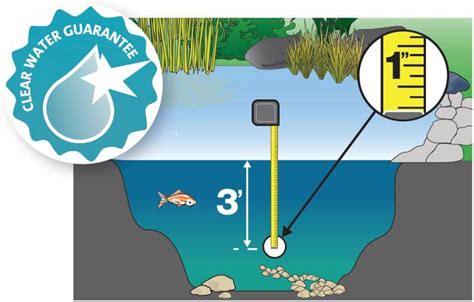Clear Water Guarantee: Mastering Filter Changes
Maintaining sparkling clean water in your pool or spa is paramount, and regular filter changes are key to achieving that crystal-clear, refreshing oasis. Ignoring filter maintenance can lead to cloudy water, algae blooms, and even costly repairs down the line. This comprehensive guide will equip you with the knowledge and skills to master filter changes, ensuring your water remains pristine for years to come.
Understanding Your Filter System
Before diving into the specifics of filter changes, understanding your system is crucial. Different types of filters exist, each with its own maintenance requirements:
- Sand Filters: These are the most common type, using sand to trap debris. They require backwashing regularly (a process of reversing the water flow to clean the sand bed).
- Cartridge Filters: These utilize replaceable cartridges that trap debris. Cartridges need periodic cleaning or replacement.
- DE (Diatomaceous Earth) Filters: These use diatomaceous earth powder, a natural substance, to filter out microscopic particles. They require regular cleaning and replenishment of the DE powder.
Knowing your filter type allows you to tailor your maintenance approach effectively. Consult your pool or spa's manual for specific instructions tailored to your model.
How Often Should I Change My Filter?
This depends heavily on several factors:
- Filter Type: Cartridge filters generally require more frequent changes or cleaning than sand or DE filters.
- Pool Usage: High pool usage means more debris entering the water, necessitating more frequent filter maintenance.
- Climate: Hot, sunny climates can accelerate algae growth, requiring more frequent filter cleaning.
- Water Chemistry: Poorly balanced water chemistry can lead to increased filter clogging.
As a general guideline, cartridge filters often need cleaning every 2-4 weeks, while sand and DE filters may only require backwashing or cleaning every few months. However, regularly inspect your filter pressure gauge. A significant increase in pressure indicates a clogged filter and the need for cleaning or replacement.
How to Change a Cartridge Filter
Changing a cartridge filter is relatively straightforward:
- Turn off the pump: This is the most crucial step to prevent accidental injury or damage.
- Open the filter tank: Carefully remove the access panel or lid.
- Remove the old cartridge: Gently pull out the old cartridge. Be prepared for some water spillage.
- Clean or replace the cartridge: If cleaning, use a garden hose to thoroughly rinse the cartridge. If excessively dirty or damaged, replace it with a new one.
- Install the new cartridge: Carefully insert the new cartridge, ensuring a proper seal.
- Close the filter tank: Secure the lid or access panel.
- Turn on the pump: Monitor for leaks.
How to Backwash a Sand Filter
Backwashing a sand filter is essential for its longevity and efficiency:
- Turn off the pump.
- Locate the multiport valve: This valve controls the water flow.
- Turn the valve to the "backwash" position: This reverses the flow of water, cleaning the sand bed.
- Turn on the pump: Let the backwash cycle run for the recommended time (usually 2-3 minutes, check your manual).
- Turn off the pump and switch the valve to "rinse": This removes any loosened debris.
- Turn on the pump again for a short rinse cycle.
- Turn the valve to the "filter" position.
- Turn the pump back on and monitor the pressure gauge.
What if My Filter is Still Clogged After Cleaning?
If your filter remains clogged after cleaning or backwashing, several issues could be at play:
- Damaged filter media: The sand, cartridge, or DE may be damaged or worn out and needs replacing.
- Excessive debris: Regular pool maintenance is essential. Consider using a pool skimmer or leaf net more frequently.
- Poor water chemistry: Imbalances in water chemistry can lead to increased scaling and clogging. Regular testing and adjustments are crucial.
Consulting a pool professional is recommended if you're unable to resolve the issue independently.
How Often Should I Replace My Pool Filter?
The lifespan of a pool filter depends on various factors, as mentioned earlier. However, expect to replace cartridge filters every 1-3 years, sand filters every 5-7 years, and DE filters every 3-5 years. Always consult your filter manufacturer's recommendations for specific guidance.
By following these guidelines and understanding the nuances of your filter system, you'll be well-equipped to maintain consistently clear, refreshing water, ensuring a truly enjoyable swimming experience. Remember that proactive maintenance is key to avoiding costly repairs and enjoying your pool or spa for years to come.

